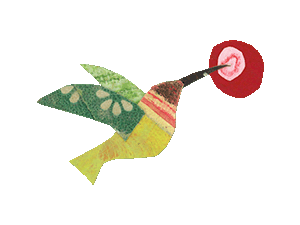Our Approach
(Skip to the bottom for a 15 minute podcast)
Storytelling is as old as cave paintings and as modern as blockbuster movies. What we now know from neurologists, psychologists, and evolutionary theorists is that storytelling is not just for fun. It is a cognitive tool humans evolved to share information, retain attention, and build trust.
Fortunately, we don't need to know any of that to put it to good use. It comes naturally to each one of us – just like walking.
Want the hard science?
The ultimate message is:
YOU ARE ALREADY A GOOD STORYTELLER
The quantity of books and videos available to children today sometimes leads parents to believe we can’t compete with the professionals. Nothing could be further from the truth. When we drop the search for the "perfect story," we discover something much richer and longer lasting. Storytelling isn't so much about the story itself - it's about the loving connection that grows between parent and child.
“The best stories are told by the ones who know us deeply. And if you lack confidence, then here is loads of help.”
- Steve Biddulph, New York Times Bestselling Author of The Secret of Happy Children, Raising Boys, and Raising Girls
Still, many of us are intimidated when it comes to storytelling. That’s why we’ve described a simple method that helps. We call it the Storytelling Loop and it provides a basic framework upon which any parent can build stories according to your own life and values. That’s our goal - personalized stories for you and your child.
Here it is in a nutshell…
Want More detail?
The Storytelling Loop is Chapter 1 of the book and we refer to it constantly in the blog (aptly titled The Storytelling Loop)
It’s not possible for us to flesh out the storytelling loop in a few sentences (it comprises chapter one of the book), but here’s an example of how it works:
Make a fairy boat from twigs and grass. Or noodles, computer parts or scraps of carpet. Whatever. Then, let the kids play with it. It doesn't even matter if it sinks. Just laugh. Later, after lunch or during a quiet time, tell a story about a mouse (or a fairy, an ant, etc.) who finds a small boat and sets sail for adventure.
Don't have a fairy boat? Make a little house or a fort. You can refer to a child's backpack, a discarded piece of gum, or a tree with a unique crook in its branches. Anything. Take one to three concrete things (or events) from your day and use them as anchors in your story.
This technique ties reality into imagination, then back again. Afterward, the kids will probably want to play out some of the story, in which case they might need a boat. This is the storytelling loop – a real situation, imaginary development, followed by a new real situation – and it comes in all shapes and sizes.
"This book will quietly thrill you and deeply connect you with your children. It will give you the feeling I can do this."
- Kim John Payne, Family Counselor and Bestselling Author of Simplicity Parenting
Not ready yet?
Practice exercises help get you started
Telling just a few stories with this method will have you feeling like an empowered and enthusiastic storyteller. If you study the methods in the book and on the blog, it will also help you learn how to use storytelling to soothe anxious children, teach important lessons, and help construct meaning from difficult life events.
But don’t take it from us - read the reviews from parents and readers like you on Amazon. Here’s just one -
“This book is so much better than I expected. After reading about a quarter of the book, I was driving my daughter to her grandma's house and she was upset. She had excitedly made plans to visit Grandma on her own, without her baby brother tagging along, but on the way over she was sad about leaving him behind for the day. I gathered up my new storytelling skills and gave it a shot.
I told her a story about her stuffed tiger and his journey through the forest to his grandma's house. The stuffed animals he met along the way all gave him ideas about what they did when they missed someone special. The last one suggested that he might make something special for the person he was missing with Grandma. So that's what the tiger did. My daughter said she felt better at the end of the story, and then had a blast with Grandma making something special for her brother while she was there.
When I had my daughter I had really felt out of touch with my own imagination. I had spent too much time as a boring adult, worried about my own insecurities, and it felt scary to put myself out there in any creative way with my kiddo. I've gotten better, but this book was like a little bridge for me. A push in the direction I wanted to go, with concrete things to try. And the encouragement I needed.”
In this video/podcast, Joseph Sarosy outlines:
The science of storytelling
A simple method to help parents begin telling stories
The local and global impact of storytelling.




